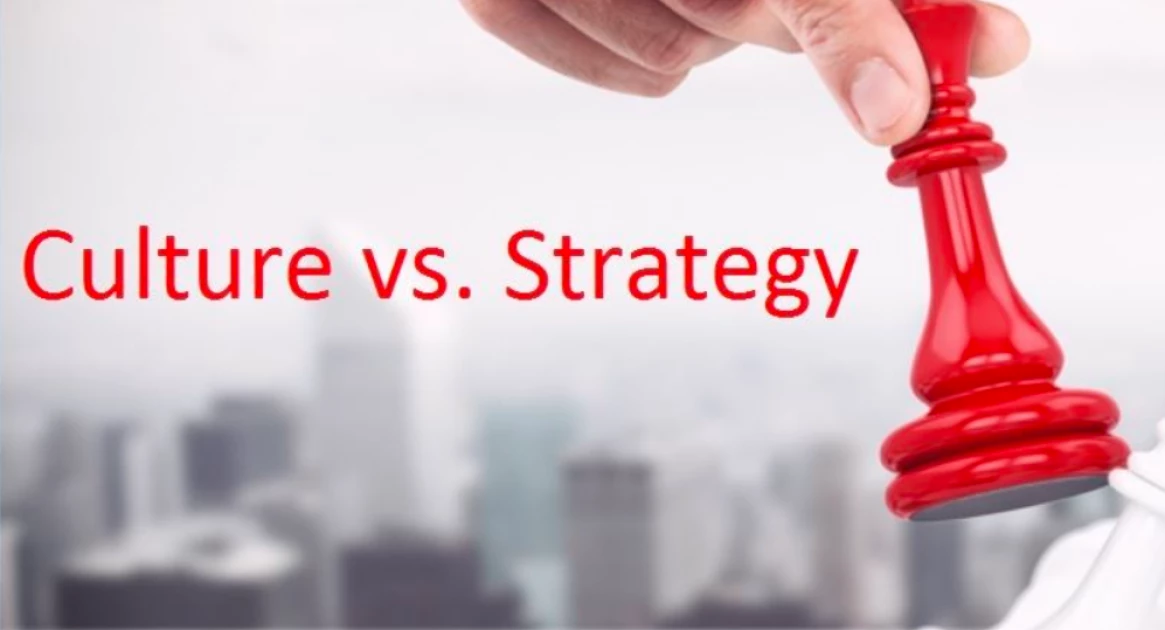OPINION: Strategy through the culture lens

The famous quote attributed to the legendary management guru and writer Peter Druker avers that “Culture eats strategy for breakfast….”
Several adaptations have been made over the years to include the view that Culture eats operational excellence for lunch and everything else for dinner...! If really true, this is quite a damning statement.
But what really is the relationship between culture and strategy? Is one more important than the other? Can we successfully implement strategy without regard to the existing culture? To answer these questions, we perhaps need to understand each of these concepts.
Culture: The definitions of organizational culture are many and varied but the most common asserts that Organizational culture is the embodiment of values, beliefs, attitudes, systems, and rules that shape and inspire employee behaviour within an organization.
The culture reflects how employees, customers, vendors, and stakeholders experience the organization and its brand. Just like a Nation’s Culture, an organization’s culture is embedded in a network of organizational practices. It is evident in the behavior of individuals and groups and it is amplified by the behavior of leaders.
An organization’s culture is seen in the way things get done within the organization such as, how employees respond to new customer demands or even how leadership responds when employees make mistakes.
Strategy: On the other hand, we shall take Strategy to refer to an organization’s game-plan to win its chosen markets or simply put- an organization’s approach to succeed in achieving its set mandate/Mission.
Many a CEO, assert that “you can have a good strategy in place, but if you don’t have the culture and the enabling systems that allow you to implement that strategy, the culture of the organization will defeat the strategy.” Examples abound of how hitherto large organizations or grand projects with a sound strategy, have been felled by a poor culture, in other words, an unsupportive culture.
For instance, history has assigned human error to the sinking of the Titanic- the world’s largest and most luxurious ship of its time which was also one of the most technologically advanced. Indeed, the sinking of the magnificent Titanic on its maiden voyage has been studied as a classic example of how culture can eat strategy.
Prior to setting sail, the public had been convinced that the Titanic was unsinkable, having been built with the highest technological and engineering standards and manned by extremely competent leadership. It thus promised excellent passenger service.
However, on that fateful night, 14th April 1912, while on its maiden voyage, the mighty Titanic crashed into an iceberg and sank on 15th April 1912 taking the lives of about 1,500 passengers with about 700 survivors. What caused this catastrophe? Wasn’t there a way to foresee this? Wasn’t the Titanic UNSINKABLE?
Study after study has established that the makers of the Titanic planned to build the ship within schedule, set it on sail with pomp and colour and ensure timely arrival in New York as promised to the passengers. Any divergent views that may have interfered with this plan were silenced.
Following investigations, it emerged that the Titanic may have sunk due to the following reasons among others;
i. Design flaws
ii. Materials chosen.
iii. Attitude of Leadership.
- Silenced those who raised questions,
- The captain failed to heed ice warnings directly in his path,
- Gave the order to abandon ship several minutes after the ship began to list, and;
- Allowed lifeboats to leave partially filled.
Thus, the culture of arrogance supported a strategy of ignoring risks with disastrous consequences.
So then, which of these is more important than the other? This question assumes that organizations can choose one or the other. WRONG! Culture and strategy are inseparable in that culture drives strategy and strategy drives culture. At the centre of these is Leadership. Successful organizations are those that create a sturdy alignment of Strategy -Leadership – Culture to optimize performance. The closer these elements are, the bigger the space for performance.
Leadership must continuously communicate and translate strategy into day-to-day work. Leadership must create a safe environment in which employees see how they fit in and contribute to strategy execution. Organizations must shift their mindsets from Culture eats strategy to Culture enables strategy.
The writer, Rosemary Maina, is the Head of Training and Consulting at CPF Financial Services
Want to send us a story? SMS to 25170 or WhatsApp 0743570000 or Submit on Citizen Digital or email wananchi@royalmedia.co.ke
Comments
No comments yet.


Leave a Comment